
Volume 19, Number 3

Jennifer Barker1, Ken Jeffery2, Rajiv Sunil Jhangiani3, and George Veletsianos4
1Douglas College, 2British Columbia Institute of Technology & Royal Roads University, 3Kwantlen Polytechnic University, 4Royal Roads University
Since the launch of the BC Open Textbook Project in 2012, the adoption of open textbooks has steadily grown within public post-secondary institutions in British Columbia, Canada. An analysis of adoption records over a five-year period reveals that open textbooks have been adopted across all types of institutions, including research universities, teaching universities, colleges, and institutes, and across a diverse set of disciplines, with the largest numbers in the sciences and social sciences. In this report we identify, describe, and illustrate eight distinct patterns of open textbook adoption. These are: stealth adoption, adoption by infection, committee adoption, sanctioned exceptional adoption, course developer adoption, infection by inter-institutional carrier, creation and adoption, and lone adoption. While these patterns are not intended to be exhaustive, we hope that identifying these patterns provides a useful framework for campus leaders to (a) understand how adoptions occur in their own contexts, (b) identify ways to support further adoptions, (c) recognize that there are multiple ways, and no single path, to supporting the adoption of educational innovations at their institutions, and (d) foster the embrace of wider open educational practices.
Keywords: open educational resources, open textbooks, higher education, British Columbia, Canada
The high cost of commercial textbooks has strengthened the existing relationship between socioeconomic status and academic achievement (Sirin, 2005), with a majority of post-secondary students in British Columbia not purchasing at least one of their required textbooks due to cost (Jhangiani & Jhangiani, 2017; Hendricks, Reinsberg, & Rieger, 2017). Moreover, a significant minority of BC students are enrolling in fewer courses, not registering for specific courses, and even withdrawing from courses, once again citing high textbook costs (Jhangiani & Jhangiani, 2017). This, together with a desire on the part of faculty for greater pedagogical flexibility has led to a rapid growth in the creation, adaptation, and adoption of open textbooks, a type of open educational resource (OER) that is free for users to reuse, revise, remix, retain, and redistribute (Wiley, Bliss, & McEwen, 2014).
Within Canada, the open textbook movement has been led from within the Province of British Columbia (BC) where, thanks to support from the Ministry of Advanced Education, the BC Open Textbook Project was launched in 2012. The initial goal of this project was to harvest, adapt, or create open textbooks for the 40 highest-enrolled undergraduate courses in the Province, with additional funding later provided for open textbooks for trades, technology, and skills training (BCcampus, n.d.). Five years later, there are now over 220 open textbooks available in the BC repository (see open.bccampus.ca), for subjects as wide-ranging as History, Physics, Psychology, Adult Literacy, Tourism, and Common Core Trades. As of December 2017, these textbooks have been adopted by over 400 faculty across 42 BC institutions in more than 1650 course sections, with an estimated total savings to students of over $5.5 million (BCcampus, 2017). In addition to these significant cost savings, BC students assigned OER have been shown to perform the same as or better than those assigned commercial textbooks (Hendricks et al., 2017; Jhangiani, Dastur, LeGrand, & Penner, in press), a consistent finding in the research literature (Hilton, 2016).
A BCcampus-sponsored survey of 78 BC educators using OER aimed at better understanding their experiences, perceptions, barriers, and enabling factors revealed similar patterns of OER adoption across research universities, teaching universities, colleges, and institutes (Jhangiani, Pitt, Hendricks, Key, & Lalonde, 2016). Consistent with previous studies (Hilton, 2016), a majority of these educators rated the quality of the OER they used as comparable, slightly better, or significantly better than traditional, proprietary materials. The most significant barriers to using OER identified by this sample concerned discoverability, time, and a lack of support. On the other hand, the availability of relevant, high-quality, and easy-to-use OER and a personal recommendation were listed among the top factors that facilitate the adoption of OER.
However, although earlier studies provided a snapshot of OER adoption across the Province's public post-secondary institutions, OER adoption is not a homogenous experience. While some faculty may be early adopters and discover and use OER independently, we suspected that faculty members come to use OER in a multitude of ways. Therefore, a need remains to better understand the different pathways to OER adoption. By understanding how faculty come to adopt OER, the community, individuals, and institutions advocating for open practices will gain an understanding of the ways that OER infuse into practice, and will therefore be better able to impact practice. Furthermore, such knowledge will enable those advocating for OER to explore different models of OER diffusion, and thus investigate alternative ways of impacting practice.
The BCcampus open textbook adoption records provided an archival research opportunity to fulfill this objective. The BCcampus open textbook adoption records consist of voluntary self-reported data from adopting faculty or institutions. In particular, BCcampus invites faculty in the province to submit information pertaining to open textbook adoptions, such as textbook adopted, textbook displaced, discipline, course enrolment, etc. While such data should be recognized for their limitations, the impact of such self-reported data on this study is expected to be minimal. This is because this study seeks to examine ways that OER are adopted, as opposed to investigating the accuracy of reported impacts of open textbook adoptions or the degree of OER use in the province.
By conducting a longitudinal analysis of open textbook adoption frequencies (separated by institution, discipline, and instructor) we have unearthed eight distinct patterns of adoption. While these patterns are not intended to be an exhaustive list (e.g., there may very well be additional patterns in different contexts that were not evident within the BCcampus dataset), we hope that identifying these patterns provides a useful framework for campus leaders (e.g., administrators, faculty, OER working groups, open education advocates) to (a) understand how adoptions occur in their own contexts, (b) identify ways to support further adoptions, (c) recognize that there are multiple ways, and no single path, to supporting the adoption of educational innovations at their institutions, and (d) foster the embrace of wider open educational practices including the adaptation and creation of OER as well as open pedagogy.
The data reveal that open textbooks have been adopted across diverse disciplines, with the largest numbers of adoptions in BC occurring in the Sciences and Social Sciences (Figure 1). These discipline-based adoption patterns are likely a function of the high cost of commercial textbooks in these disciplines, the availability of open textbooks for specific courses, and BCcampus' focused campaign to support the adoption of open textbooks in the highest-enrolled courses in BC.

Figure 1. Open textbook adoptions by discipline.
As can be seen in Figure 2, the share of open textbook adoptions by the type of institution corresponds somewhat to the number of public institutions in the four categories (11 colleges, 6 research universities, 4 teaching universities, and 3 institutes; see Appendix), with only research universities under-represented. Regardless of institution type, the modal adoption trend over time is a steady increase in open textbook adoptions, such that once open textbooks are introduced to an institution or faculty, they seem to become more widespread there (Figure 3).
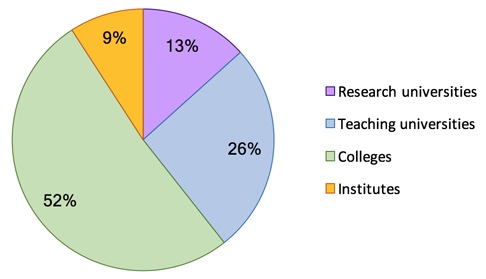
Figure 2. Open textbook adoptions by type of institution.
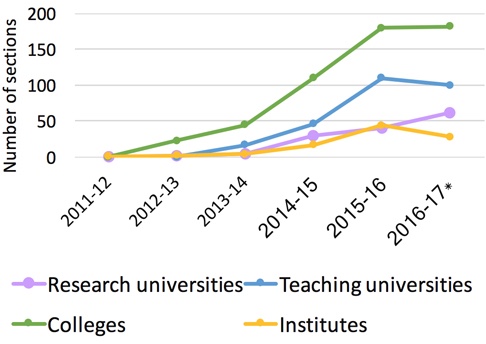
Figure 3. Open textbook adoptions by academic year by type of institution. Adoption data from 2016-17 does not include Summer 2017 sections.
After organizing and analyzing the self-reported adoptions of open textbooks in BC from Fall 2011 to Spring 2017, we sought to describe how exposure translates to adoption by describing apparent patterns of adoption within an institution or program. We identified eight patterns. Recognizing adoption patterns and attempting to predict which adoption pattern may be most relevant to a given institution or department can be a first step to predicting what exposure strategies (internal or external grants, honoraria for faculty reviews, guest speakers, professional development opportunities, internal advocacy, etc.) might be most effective in encouraging the adoption, adaptation, and development of additional open textbooks in BC.

Figure 4. Visual representation of a stealth adoption.
Stealth adoption refers to the instance in which open textbook adoption is invisible to individuals beyond those adopting the textbook. As student advocacy groups work to increase visibility of open educational resources, students who, for example, cannot afford to purchase a textbook for their course may hear about these resources from other students and choose to use them instead of purchasing an officially required textbook, potentially without their instructor's knowledge. In other cases, such as the use of the OpenStax Anatomy & Physiology textbook at Douglas College, instructors officially listed an open textbook with their campus bookstore, but as a "supplementary" and/or "optional" resource rather than the one required textbook for a course. As a result we suspect that the officially-reported number of open textbook adoptions in BC postsecondary institutions is likely lower than the actual usage rates. Some instructors may have recommended an open textbook to their students without necessarily listing it as an officially required resource for the course or may have adopted one without reporting it to BCcampus, or students may have adopted open textbooks in lieu of the non-open textbooks required by instructors. These uses of open textbooks are not currently captured in BCcampus' official listings of adoptions, which include only those open textbooks adopted as the required textbook for a given course. "Stealth adoptions" such as these result in the officially-reported numbers of open textbook adoptions being lower than actual usage rates of these resources.
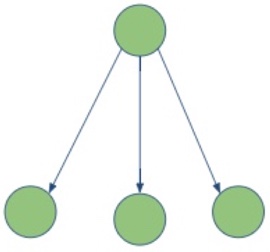
Figure 5. Visual representation of adoption by infection.
In several cases, the reported adoptions from a given institution show a rather distinct pattern wherein one instructor adopts an open textbook for their course for one or two semesters, and then other instructors within the same department report adoptions in subsequent semesters. We called this type of adoption an "infection." In such cases, it seems that a single instructor heard of open textbooks and was willing to try one out and then, being pleased with the results, went on to recommend open textbooks to their colleagues. For example, within the Physics department at Douglas College a single open textbook "champion" piloted the adoption of an open textbook and subsequently encouraged other instructors in physics to try an open textbook in their own classes. Once the instructors had a chance to witness the benefits of using an open textbook in action, they then opted to adopt it permanently; however, they were very unlikely to have tried it in the first place were it not for the encouragement of a vocal champion in their department.
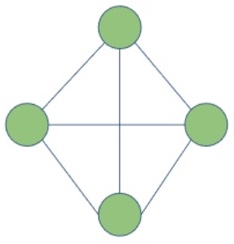
Figure 6. Visual representation of committee adoption.
Committee adoption refers to those cases in which committees, rather than individual instructors, collaborate on the design and development of courses and curricula and adopt open textbooks. This is often the case with introductory-level survey courses that are taught by multiple instructors. Interestingly, in such cases, this standardization is often motivated by a desire to save students money so that, for example, a student who needs or wishes to retake a course with a different instructor will not be required to purchase a second textbook. When a course committee decides to adopt an open textbook for a large survey course, there is naturally a marked increase in the number of instructors reporting adoptions for that course in a single semester. As a result of the high number of sections of such courses, many instructors and many students can thus all be exposed to an open textbook for the first time. The data suggest that although committees may in some cases be slow to adopt an open textbook, they are also reluctant to switch back once the change has been made, as such sudden and large-scale adoptions seem to persist through multiple semesters. A unique case of committee adoption occurs at Royal Roads University. The MA in Learning and Technology program has been redesigned with openness as a core value, and each course in the program is being designed by teams of at least two faculty who serve as the committee for that course. This team selects course readings, identifying open resources first and foremost where available and pedagogically prudent, including open textbooks such as Bates (2015). Thus, as courses are developed, open resources are infused into the design of courses from the beginning, making them integral components of the course experience. It is important to highlight here the potential overlaps between this pattern and other types of adoption. For instance, an open textbook champion that "infects" others with their advocacy may sit on a course development committee.
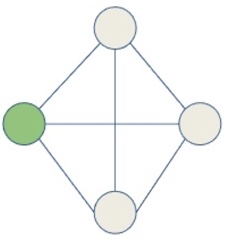
Figure 7. Visual representation of sanctioned exceptional adoption.
A twist on Committee Adoption, sanctioned exceptional adoption reflects those committee-adoption contexts in which support for the adoption of an open textbook is not supported by a majority of the committee or department. In one such case in BC - the Psychology Department at Kwantlen Polytechnic University (KPU) - several vocal OER advocates banded together and requested departmental permission to adopt an open textbook for the two Introductory Psychology courses for a period of one year (while the rest of the department continued adopting the incumbent standardized commercial textbook). Over that year, the instructors investigated the impact of open vs. commercial textbook adoption on student outcomes (e.g., exam performance, study habits, etc.). At the end of the year, the instructors presented their findings to their colleagues, which showed that KPU Psychology students assigned an open textbook performed the same as or better than those assigned the commercial textbook (Jhangiani et al., in press). Although the results of their investigation did not sway the majority of the department to switch to the open textbook, an ongoing sanctioned exceptional adoption was approved, such that any future KPU Psychology instructor of Introductory Psychology would be free to adopt an open textbook. This exceptional adoption approach does not require course-wide standardization of open textbook adoption.
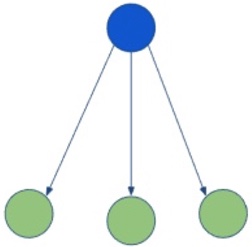
Figure 8. Visual representation of course developer adoption.
Course developer adoption refers to the cases where course developers familiar with the OER movement advocate for, support, and influence the adoption of open textbooks in new or revised course offerings. In many cases, instructional designers, who are experts in designing learning experiences, support such adoptions through consulting with, advising, supporting, and mentoring faculty and faculty course developers. This is one reason why the Open Education Group recently announced an open education fellowship program for instructional designers ("Designing with OER (DOER) Fellows," n.d.). Although many institutions in BC employ instructional designers, only two strive to ensure that every course is supported by an instructional designer: Thompson Rivers University, Open Learning (TRU-OL) and Royal Roads University. For example, at TRU-OL, instructional designers supported faculty course developers in the redesign of a Research Methods in Psychology course in order to integrate an open textbook (Price, Jhangiani, & Chiang, 2015) and build other courseware around it in a way that capitalized on the affordances of open practices.
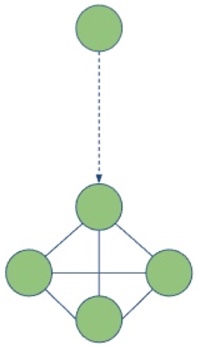
Figure 9. Visual representation of adoption by inter-institutional carrier infection.
An interesting adoption pattern that became apparent as we sorted through the data was a kind of "cross-pollination" occurring between institutions. In these cases, an individual who possessed experience with open textbooks or was already a champion for open education brought that enthusiasm with them to a new institution. These individuals include contingent faculty who teach at multiple institutions and full-time faculty who move from one institution to another. As an example, Charles Hooge, an instructor who was an advocate for open textbooks at Capilano University, brought that enthusiasm to the British Columbia Institute of Technology (BCIT), immediately putting forward a proposal to begin editing an OpenStax College Physics textbook. In such cases, because the original adopter already has experience with open textbooks, there is the possibility of rapid adoption and a sudden increase of open textbook adoptions at their new institution. Anecdotally, we discovered that these champions also often become advocates, joining cross-functional OER working groups to continue to spread the word.
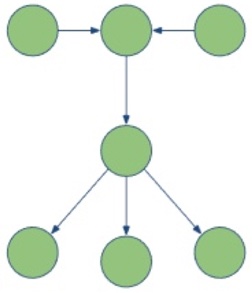
Figure 10. Visual representation of creation and adoption.
One of the most powerful ways for educators to gain experience with open resources is when they themselves create those resources. The data revealed a number of situations where particular institutions or programs recruited faculty to help write a new open textbook which was then published through BCcampus' Open Textbook Project. In some cases, the faculty members were not familiar with the open publishing model to begin with, but once on-board, they became enthusiastic advocates. Examples of this model in action include the open textbooks Graphic Design and Print Production Fundamentals and Clinical Procedures for Safer Patient Care, both created at BCIT. Both of these textbooks filled a gap that other open educational resources did not cover. The need for the material was thus already there and only required the support of the open education community to get these projects started.
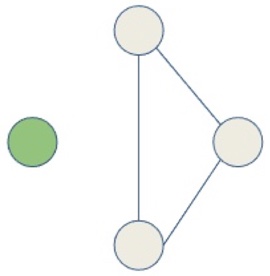
Figure 11. Visual representation of lone adoption.
The data revealed several apparent outliers, wherein textbook adoptions in some departments presented as a single point recurring one term after the other (sometimes over years) without expanding within those departments. These data points represent faculty members who adopt an open textbook and continue to use it, semester after semester, with significant time passing before the adoption of that textbook spreads to the faculty member's departmental colleagues. These "lone adopters" were persistent, and while they likely weren't keeping it a secret, for any number of reasons there were barriers to the uptake of the same open textbook by other faculty members. Unfortunately, the data do not reveal what those barriers to more widespread adoption might have been, whether a non-receptive department or simply a challenge convincing colleagues of the benefits of open educational resources. While there are several anecdotal stories of this type of adoption, it will be useful to collect more data about this particular adoption trend so as to determine the factors that could lead to future wider adoptions within the department of a lone adopter, and thus where advocacy efforts may be best applied.
The eight patterns identified above shed light on some of the heterogeneous contexts in which OER are adopted, information that will hopefully prove useful to those seeking to encourage more widespread adoption of OER within their institution or system. For example, where stealth or lone adopters can be adequately and visibly supported, infection adoptions may well follow. Where there is less than a critical mass of grassroots engagement with OER, the sponsorship of an OER creation project may lay the foundation to build such a community. Alternatively, where individual instructors who wish to adopt OER are constrained by the collective will of a textbook selection committee, a sanctioned exceptional adoption might be offered as a strategy.
Of course, this descriptive analysis was not intended to capture all possible pathways. We encourage researchers and practitioners to assess the applicability of these patterns and, where necessary or useful, to add to or modify the set. As noted above, the BCcampus open textbook records are based on self-reports by faculty or other institutional representatives. This method of gathering data erects obvious hurdles in that open textbook adopters, at a minimum, need to be aware of the existence of the online adoption reporting form and sufficiently motivated to complete it periodically. However, even when these conditions are satisfied, individual educators may operationalize the term "adoption" differently (e.g., primary required course resource vs. optional supplementary resource) and they may yet not use the form to report stealth adoptions or the adoption of open textbooks or other OER that are not held in the BCcampus repository. All of this suggests the need for the development of a better mechanism to collect more accurate data that provides a complete picture of OER adoption within each institution within the BC post-secondary system. Such data may be easily accessible within departments or institutions. For instance, given that department heads or directors have access to all syllabi used within their department or school, a text parser could be developed to identify course readings and resources that could then be identified as constituting (or not) an OER. Such analyses could be run yearly, identifying patterns of adoption over time.
Another possible mechanism may be through the establishment of OER working groups, which have emerged at several BC post-secondary institutions. These groups typically work to raise awareness of OER, provide workshops and other opportunities for training, adjudicate grants to support the creation of adaptation of OER, and even plan programs that carry a $0 textbook cost in all the courses required to earn a particular credential (often referred to as Zed Cred programs). Given the nature of their work and their greater proximity to practitioners, it seems obvious that OER working groups could play a crucial role in gathering or verifying the data summarized here. After all, accurate records of OER adoption are essential to both planning the kinds of support that are needed as well as assessing the impact of an institutional OER initiative. As researchers and advocates for OER, we hope that the identification of the eight OER adoption patterns in this report help illuminate various paths forward for both practitioners and researchers.
Bates, A. W. (2015). Teaching in a digital age: Guidelines for designing teaching and learning for a digital age. Victoria, BC: BCcampus. Retrieved from https://opentextbc.ca/teachinginadigitalage/
BCcampus. (2017). Open textbook stats. Retrieved from https://open.bccampus.ca/open-textbook-stats/
BCcampus. (n.d.) The project. Retrieved from https://open.bccampus.ca/the-project/
Designing with OER (DOER) Fellows. (n.d.). Retrieved from https://openedgroup.org/doer-fellowship
Hendricks, C., Reinsberg, S., & Rieger, G. (2017). The adoption of an open textbook in a large Physics course: An analysis of cost, outcomes, use, and perceptions. The International Review of Research in Open and Distributed Learning, 18(4). doi: 10.19173/irrodl.v18i4.3006
Hilton, J. (2016). Open educational resources and college textbook choices: A review of research on efficacy and perceptions. Educational Technology Research and Development, 64(4), 573-590. doi: 10.1007/s11423-016-9434-9
Jhangiani, R. S., Dastur, F. N., LeGrand, R., & Penner, K. (in press). As good or better than commercial textbooks: Students' perceptions and outcomes from using open digital and open print textbooks. The Canadian Journal for the Scholarship of Teaching and Learning.
Jhangiani, R. S., & Jhangiani, S. (2017). Investigating the perceptions, use, and impact of open textbooks: A survey of post-secondary students in British Columbia. The International Review of Research in Open and Distributed Learning, 18(4). doi: 10.19173/irrodl.v18i4.3012
Jhangiani, R. S., Pitt, R., Hendricks, C., Key, J., & Lalonde, C. (2016). Exploring the use of open educational resources at BC post-secondary institutions. Victoria, BC: BCcampus.
Price, P. C., Jhangiani, R. S., & Chiang, I. A. (2015). Research methods in psychology: Core concepts and skills (2nd Canadian ed.). Vancouver, BC: BCcampus. Retrieved from https://opentextbc.ca/researchmethods/
Sirin, S. R. (2005). Socioeconomic status and academic achievement: A meta-analytic review of research. Review of Educational Research, 75(3), 417-453. doi: 10.3102%2F00346543075003417
Wiley, D., Bliss, T. J., & McEwen, M. (2014). Open educational resources: A review of the literature. In J. M. Spector, M. D., Merrill, J. Elen, & M. J. Bishop. (Eds.), Handbook of research on educational communications and technology (pp. 781-789). New York: Springer.
Public Post-Secondary Institutions in British Columbia
| Colleges | Research universities | Teaching universities | Institutes |
| Camosun College | Royal Roads University | Capilano University | British Columbia Institute of Technology |
| College of New Caledonia | Simon Fraser University | Emily Carr University of Art and Designa | Justice Institute of British Columbia |
| College of the Rockies | Thompson Rivers University | Kwantlen Polytechnic University | Nicola Valley Institute of Technology |
| Douglas College | University of British Columbia | Vancouver Island University | |
| Langara College | University of Northern British Columbia | University of the Fraser Valley | |
| North Island College | University of Victoria | ||
| Northern Lights College | |||
| Northwest Community College | |||
| Okanagan College | |||
| Selkirk College | |||
| Vancouver Community College |
a Excluded from the present study due to zero reported open textbook adoptions during the specified period.


Eight Patterns of Open Textbook Adoption in British Columbia by Jennifer Barker, Ken Jeffery, Rajiv Sunil Jhangiani, and George Veletsianos is licensed under a Creative Commons Attribution 4.0 International License.